originally posted at https://canmom.tumblr.com/post/656158...
So first up… ty everyone who tuned in for Heaven’s Feel last week! That was a blast: the fights were everything I hoped for and the whole chuuni traumagirl story arc was genuinely moving and compelling. Can’t really recommend it as a first Fate necessarily, since it skims over the early parts of the story portrayed already in Unlimited Blade Works, but I reckon those movies deserve all their esteem.
(Also, apologies for lack of Toku Tuesday this week. Plans fell apart and I wasn’t up to running one. We’ll be back next week.)
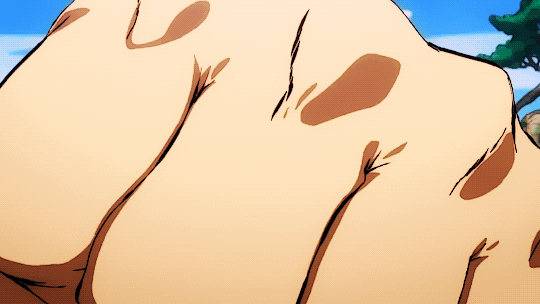
This week on Animation Night, I’m going to take up a long standing request from my friend Elaine [scattermoon], who is a big fan of a certain very long running manga series called One Piece. (I realise that among my friends that is a rather divisive choice! But hey, let’s give it a shot.)
One Piece began serialisation in Weekly Shōnen Jump in 1997, the creation of a young assistant mangaka called Eiichiro Oda. About the young Oda I can mostly find production info: he joined the company in 1992 on the strength of his manga Wanted!, then developed his drawing skills working under mangakas like Shinobu Kaitani on Suizan Police Gang and Masaya Tokuhiro on Jungle King Tar-chan and Mizu no Tomodachi Kappaman. In 1996 he wrote two piratical one-shot stories called Romance Dawn, the prototype for One Piece; then after three rejections, Jump agreed to run his series One Piece.
And One Piece got big. I don’t know exactly when it became a hit, but it soon became recognised as one of Jump’s “Big Three” series alongside Naruto and Bleach… and then outgrew even them to set the record for best-selling manga, overtaking even industry-defining series like Dragon Ball. Unusually for mangaka, Oda became extremely rich - yet he has continued to work singlemindedly on One Piece, taking almost no breaks outside of a number of health scares.

So what’s the formula that made it so beloved to its many many, fans?
Overall the structure for One Piece is a travel story. The broad-scale framing plot is that our MC, Monkey D. Luffy, and the “Straw Hat Pirates” (麦わらの一味, Mugiwara no Ichimi) who sail with him, are hoping to find a treasure called the “One Piece”, which would make Luffy the “King of the Pirates”. Along the way, they get caught up in the conflicts of a long series of islands, each one relatively self-contained as an arc. In the meantime, the metaplot concerns an unfolding pirate war between the four most powerful pirates (the Four Emperors, 四皇 yonkō), opposed to the authority of the World Government.
So if at first glance it may sound like standard shōnen stuff - individuals with different superpowers, contesting to become the strongest. But it’s clearly finding much broader appeal than that. I asked Elaine a bit about this, and she reckoned its main strength is the variety: like many successful, long-running TV series (for example, Star Trek), the premise is so flexible that it allows Oda to explore an enormous variety of affects and registers, all anchored in familiarity with the core cast. Some examples are an underwater arc exploring xenophobia and generational prejudice among fish people, a thriller arc where the characters flee poison clouds in a sinister human experimentation lab, and a political intrigue arc about a rich man attempting to stage a coup in a desert kingdom.
Beyond that, it distinguishes itself mostly in execution: a big part of the appeal is the implication of a vast, fleshed-out world painted across thousands of issues. This is built on a distinctive visual foundation: Oda can design a wildly varied cast and give them all distinctive characterisation. (Even if he is, apparently not nearly so good at designing women… 🙄)
One other small tidbit Elaine gave me was that, contra the shōnen designation and Jump’s usual audience, by far the biggest demographic of One Piece readers is women aged 30-40.
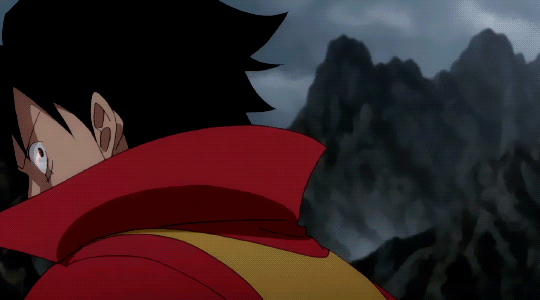
Inevitably a series as big as One Piece would see a high-profile anime adaptation, and that landed in the hands of the venerable Toei Animation, one of the oldest anime companies. They picked up the series in 1999, and it has run in a variety of timeslots - shifting from Wednesday to the prime Saturday Evening slot before narrowly avoiding cancellation to settle in the Sunday Morning slot with other long-running shows like Dragon Ball Super. This is relevant insofar as, well…
Let’s talk a little about anime production! A subject I know a lot more about than the plot of One Piece…
Most anime nowadays are produced according to a model called the Production Committee, originating in high-profile films like Akira. In this system, various capital blocs - toy companies, music companies, broadcasters etc. - pool funds in return for a comparable stake in the profit or loss made by the series, mitigating risks but also reducing the potential for profit. The studio producing the actual animation (the primary contractor) may have a stake in the committee, but often they are only paid a single, fixed fee.
The production committee system has come under a lot of fire lately as one of the barriers in the way of livable wages for animators (e.g. this rather disjointed video by the Animator Dormitory charity): a successful series may not profit the animators at all since the fixed fee is very low and, if the studio’s not on the production committee, they don’t even have the opportunity to give the animators residuals (like in Hollywood) and often face severe budget shortfalls despite often paying sub-poverty piece rates.
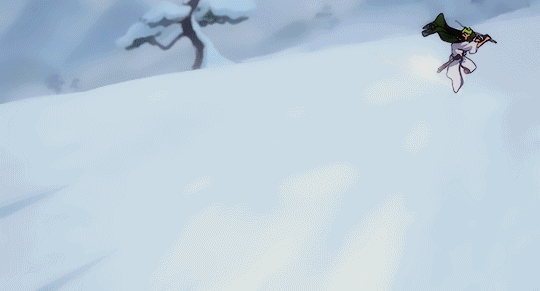
Per this video, One Piece is run on a somewhat older sponsorship model with three sponsors making joint decisions: Toei themselves, the manga publisher Shueisha, and the broadcasting network Fuji TV. (I’m not exactly sure how this differs from the more standard production committee, but I guess I just gotta take the guy’s word for it…)
In some ways this is good: One Piece is pretty much guaranteed a large audience share just because of the license so the risk is minimal, and thanks to such productions, Toei is able to pay its animators some of the best monthly salaries in the industry. (The fact that they do is thanks to the union which struggled into existence in the early days of the studio, back when it was Toei Dōga.) But this arrangement comes with some restrictions: the Saturday morning timeslot comes with a very high pace of production of 48 episodes per year, drawing a lot of complaints of extremely slow pacing. Toei are not free to ‘go seasonal’ to spend more time per episode, because the other sponsors are making a tidy profit and see no reason to change for artistic reasons.
The exact history of the anime seems to have gone through a few eras. As Elaine described it, the first 80 episodes (1999-2001) adapt the first major arc of the manga at a reasonal pace; from that point until about 2008, the series interspersed ‘filler’ arcs between manga adaptations. From that point, they adopted a slower-paced model where, rather than write filler, they would adopt only one chapter of the manga per episode. Fans were not especially happy at the slow pace, or a widely perceived drop in animation quality.
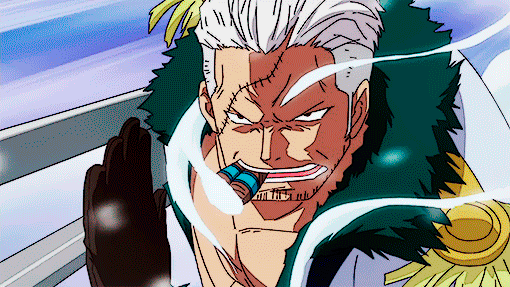
These criticisms were apparently answered with a change in direction for the most recent “Wano” arc, which is where One Piece clips started appearing on the radar of sakuga fans - such as this cut by Katsumi Ishizuka which currently stands as the top rated from One Piece on the booru, or this one by webgen star Bahi JD. These have all the hallmarks of modern fight sakuga: heavy Yutapon influence, lots of flashy impact frames, lines dissolving, the camera and characters flying about. You can check out more of this Wano thing here on the booru. (I get the impression something quite similar has happened to the Naruto sequels.)
Meanwhile, on the manga side, Oda has apparently been attempting to condense more events into each chapter of the manga to better suit the pace of the adaptation - alluding to a fight which the animators can then elaborate on. So perhaps the pacing troubles are coming to an end… the manga, in any case, remains astoundingly popular, untouchable by anything in Jump.
Anyway! That is, as best as I understand it, the history of the One Piece TV show. However… we’re not watching that tonight. Instead, Elaine has picked out a handful of One Piece films…
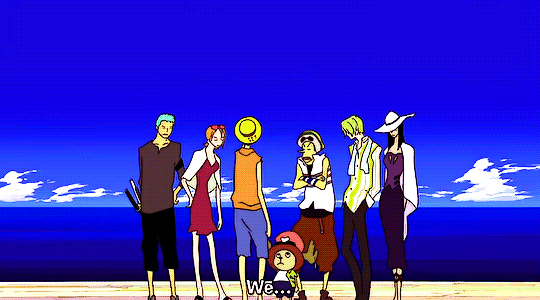
Much like the TV series, the One Piece films have gone through various eras. The earliest films tended to be purely original stories, often diverging significantly from the source material; a second era saw higher-budget, condensed retellings of arcs already covered by the TV series; the third, current era of films consists of side stories overseen (and one time written) by Oda, but not directly part of the main story. Elaine’s given me one film rec from each era to give us a little historical core of the series
From the first era, we have Baron Omatsuri and the Secret Island (2005), which is notably the second film directed by Mamoru Hosoda [previously on Animation Night #15 and #47] after Digimon: The Movie. We can already see some elements of his style, like the kagenashi (unshaded) animation. The film sees the Straw Hat Pirates drawn into a series of trials on an unfamiliar resort island, but inevitably more sinister things are afoot - hinging on a flower that resurrects facsimiles of the dead.

The second era brings us the Fate-worthy title Episode of Chopper Plus: Bloom in the Winter, Miracle Sakura (2008), a retelling of the ‘Drum’ arc focusing on the character Tony Tony Chopper who is a kind of anthro reindeer?? The Straw Hats show up on a winter island, seeking medical treatment, and seem to get drawn into some kind of furry banditry situation where they’re attacked by big rabbits. It sounds wild and I’m very curious to see how that all comes together.
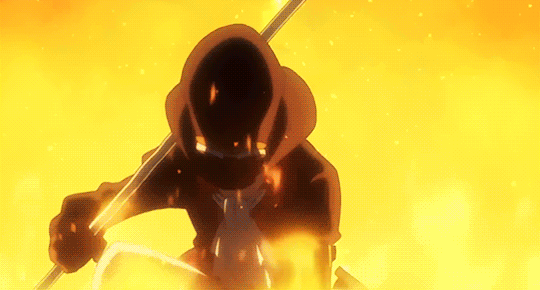
Last, we have One Piece Film: Gold (2016), from the current side-story-oriented era. In this one, the Straw hats find themselves on a kind of giant casino ship, where a conflict over cheating at dice draws them into a battle for control over the whole ship.
So. One Piece! I’ve never really dipped my toe in, just aware it’s a thing people love - but I’m absolutely curious to peer into this whole enormous psychic whirlpool that has been churning at the centre of the manga/anime industry for most of my lifetime. Fingers crossed we’ll find something delightful in here that appeals even to the One Piece skeptic. And time permitting, I’ll also throw in an episode from that Wano arc for the sakubutas among us to roll around in.
Animation Night 61 is intended to start at about 7PM UK time, 1h40m from this post, over at twitch.tv/canmom. In the meantime, I’m going to be challenging myself to animate a flashy punch in about an hour, so drop by Twitch if that sounds fun! See you there, either way~
Hosoda’s film (Baron Omatsuri) was excellent. felt like night is short walk on girl seguing into end of evangelion (at least visually, it wasn’t quite that bleak). both the earlier ‘where the hell is this gonna go next’ antics full of charming character animation and the later imagery of the huge apocalyptic worm flower monolith adsorbing people to its flat surface were really on point, and the final fight had some sick choreography with the beautiful smoke animation and swarms of arrows and really stark lighting. definitely my favourite of the films we watched. and it was cool to see a slightly rawer version of Hosoda’s sharp editing style.
the Episode of Chopper Plus film took a while to get me - the villain’s design with the metal beard thing is really exceptionally ugly, and I wasn’t convinced by the drawing style (with its rough shapes and light grey lines) in the earlier scenes - but once we got into the backstory of the adorable reindeer doctor child, and the truly absurd level of stacked up plot devices (the father figure has like four different causes of impending death by the end it’s great), it was hard not to be charmed. and the art style justified itself with the really cool kinetic fight sequence at the end.
Gold was pretty eh. it had its moments, like the Wacky Races tribute sequence, but it never really left the shadow of Lupin III that it was imitating. and the revised character designs are honestly quite offputting, like I get they’re trying to push the silhouettes more but those giant toothy grins everywhere and universal wasp thin waists and huge orb boobs on every girl, it’s not my cup of tea lol. does make me want to get back to watching Yamamoto’s The Woman Called Fujiko Mine series which i think manages to pull off a very similar space a lot better!
episode 934 of the main anime was cool to witness. I hadn’t the foggiest what was going on, but it was interesting to see another anime playing with line weight in a similar fashion to the Ufotable Demon Slayer adaptation (also a Jump series, wonder if that’s something they’re pushing?)… and the Ishizuka cut hit even harder at full size with sound. the character designs in this pseudo-Edo period setting are a lot more appealing than the ones in Gold.
overall? glad to have taken a look in! ^^
Comments